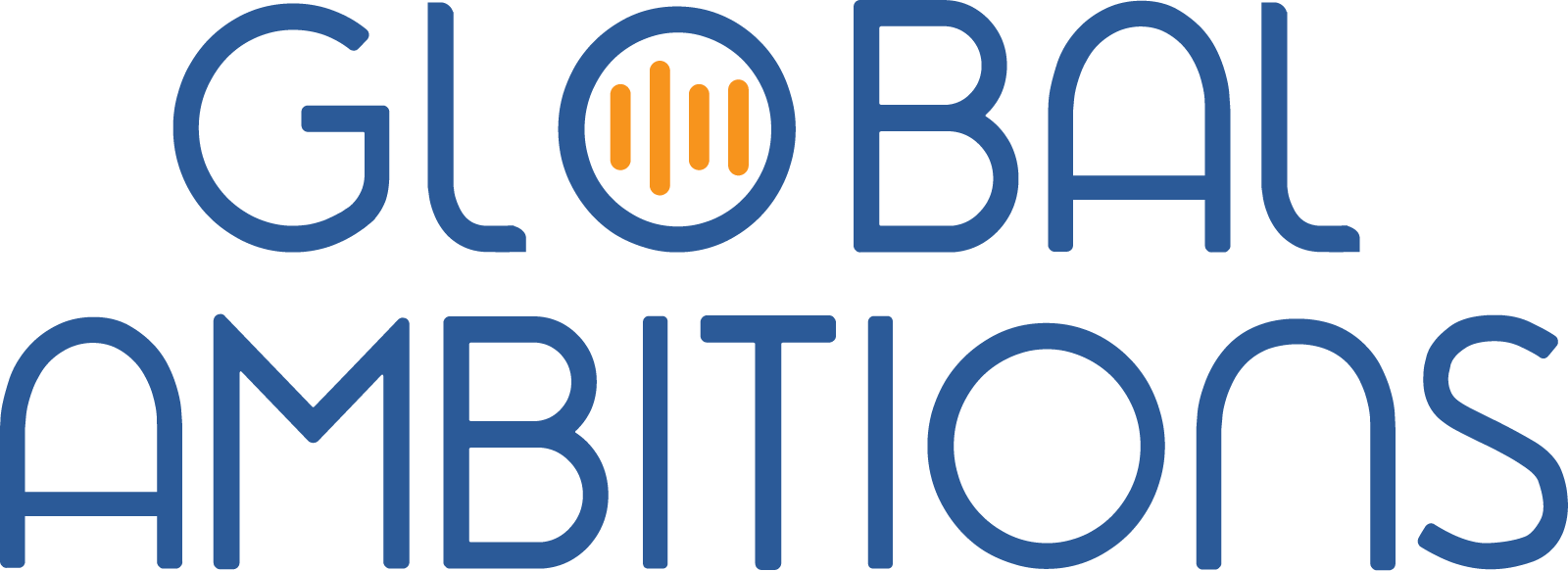With Jodi Shimp, Global Content Strategist, ex-Wayfair
Below is a full transcript of this episode.
Kim Shouler
Hi, everyone. My name’s Kim Shouler. I am your host today for this episode of Global Ambitions. And this time, I’m very happy to have with me Jodi Shimp. Jodi is a global content strategist. And we’re going to be speaking today about how content strategy supports global expansion. Hi, Jodi.
Jodi Shimp
Hi, Kim. Thanks for having me.
Kim Shouler
You’re very welcome. Great to have you on. So if you don’t mind, first of all, I’d love to know a little bit more about your background personally. So how you came to work in UX design and to in particular, really content and localization strategy. So how did that come about for you?
Jodi Shimp
So I think like most people in UX design and even content strategy in terms of UX design, I didn’t come from a straight path. It wasn’t one of those where when I was in school, I thought that’s exactly what I was going to do and what I was going to be. But rather a very odd path that really probably truly started as a technical writer with a large manufacturing company, Crown Equipment, I don’t know, probably 15 or more years ago at this point.
Kim Shouler
Mm hmm.
Jodi Shimp
So when I started with them as a technical writer, I just started seeing a lot of things that probably weren’t the best experience for the end user. A lot of changes happening with digital strategies and digital transformation going on. And then that over time led me to the UX design team at Wayfair, working on all of their five customer facing brand sites and leading content strategy on the UX team. All the customer facing content.
Kim Shouler
Mm hmm. Yeah, and I’d be interested to hear how you would define content strategy. What does that mean?
Jodi Shimp
Yeah. That’s always the big question. And it’s a question that the content strategy team and others find themselves constantly telling within the company. That’s always a big thing. So content strategy at Wayfair, specifically when we talk about that, it’s more on product content and UX content on the product informational. So things and content that guide a user to be able to complete a task or a function, whether that’s a checkout process or finding information about a return policy, things like that, all of the different user journey workflows that work together. Not so much the branding, more the informational.
Kim Shouler
So it’s the experience that the user gets through that information, through that content. Correct. Okay. Interesting. Yeah, I’d love to hear more if you can, about some of the specific challenges that you’ve been faced with. The companies you’ve worked with have been faced with, and also what effect those challenges were having on that company, on that organization.
Jodi Shimp
So one of the things that I found to be common, regardless of whether I was working in a company that’s doing more physical product and user interface design on a physical product, or like Wayfair, a digital product where the product is the website itself. The big challenge with localization really stems from the content in the first place, the source content. So when everyone’s all excited about expanding to a new country or a new language, they’re thinking about things like distribution and local legislation, all of those tangible things. How are we going to work with different shipping companies? How are we going to apply for all of the different certifications? We need, things like that.
And when they have a line item on the project plan for localization, it’s actually just one line item that says translation. And that is supposed to apply to everything. So what I found is that, for example, at Wayfair it was “translate the website.”
So when I came on board and I’m supposed to be developing this localization strategy, I start asking questions like, Well, if we translate the website, how is that going to impact a customer that doesn’t speak the language of the customer support person that they’re going to be chatting with on the website, all these different things. So for each feature, there has to be a plan about how to support the language that’s offered on the website and not only support the language for the end user facing part, but the internal users also.
So as they’re talking to employees at that company, does the employee have the right resources to send a follow-up email in that language, or are the templates only in English, for example? Can they direct them with a link to help about how to return a product? Or is the link that they send that’s already populated into their CRM, is that link going to get them to an English version of the return policy or the wrong countries version of the return policy? So taking that first inventory and understanding, really when we say we want to translate and localize, what is the extent of that? What can we afford to do? What’s the bare minimum to help the end user feel that they’re truly integrated into and accepted into the product ? So it’s a very important topic for inclusivity as you expand.
Kim Shouler
And how have you found companies to be tackling this? It sounds like, you know, when you join, you start working on these projects. There’s quite a lot of education you have to do with these clients. Is there an awareness, for example, that source content needs to be localized or localization friendly, as you say, the infrastructure? The other content to support it needs to be there. Is that an awareness that has been there or you’ve had to build that as you go along?
Jodi Shimp
For the companies I’ve had to work with, there have been varying degrees of understanding, but overall it’s definitely been an education process. So I found that there are really two main streams of activity to start with, and one is to start with the education process, with the source content creators and the source software creators. Because content creators need to understand what things they do that will allow easy and accurate localization of their content. And then the software engineers also need to understand what things they can do to enable localization.
So you know, the basics, not embedding texts into code, allowing for expansion. So you’re talking to the product designers. Are they designing for the expansion of texts? Do they understand that there could be in the future right to left languages that are necessary and build that in the very beginning? And so every time you’re designing a new digital product or a new feature, you’re thinking with that global first mindset. So there’s a lot of education for content creators, designers and engineers about what that global first mindset means.
Even if there aren’t currently plans to expand into a certain thing. It’s so much easier if that’s planned in advance than trying to fix it after the fact. And then the other part is really being an advocate for those LSPs back to the company about what things are painful, listening to them and treating those LSPs or internal translation groups as partners as you go because they can help you avoid so many pain points in the future.
So with each of the companies, I’ve started with a bit of a matrix working with numerous departments, even the ones you know, I like say we’re on the design team, but also we work with the engineering team, with the brand marketing team, with customer success and customer support teams, so that everybody’s marching to the same drum. Because the other thing that happens is that each of those groups and more do create a bit of a localization strategy. And it may be very good and it may be, you know, still growing and learning, but then at the end they all want to dump it onto the same localization team, whether that’s an external LSP or an internal.
And so where their volume might have been fine to go to that LSP or that external, as a whole, there’s not enough time to do that and there wasn’t enough planning ahead. So figure out what things can be automated, you know, which types of content should receive which treatment. As far as the marketing, high stuff, high touch content is going to be rewritten for local audiences versus something that’s going through machine translation or machine translation with post-editing. Really understanding from a larger point of view what that strategy is going to be across different departments.
So lots of collaboration, lots of negotiating with different teams internally to make sure that those things are all planned for as much in advance as possible. Because the other situation, which still kind of requires the same thing, is kind of going back and putting the wheels on the car as it’s going down the hill and already started and kind of redoing some of those things in reverse, which is possible, but obviously more difficult.
Kim Shouler
So really, you’ve been involved in a lot of conversations getting everyone to sit at the table of understanding and just really being underpinned by true partnership, working together.
Jodi Shimp
Yeah.
Kim Shouler
So it sounds interesting. That’s great. So while you are having these conversations with different stakeholders in the company, what have you found that you need to back up those conversations? When I’m I’m thinking of data metrics, what sort of measurables do you look into? And in particular, are there any takeaways you can give in particular for the listeners? Would there be things that they wouldn’t have thought about that you could look into or that you could measure to help this?
Jodi Shimp
So one of the things that historically for localization teams has been a big measure is, you know, cost per word. But I found when you’re talking to executives or maybe the training department, no one really has a clue how many words they’re creating or what that means. It doesn’t mean so much. So instead of talking about, Oh, we can drive a lower cost per word if we’re sharing resources and sharing the translation memory, really talking about customer experience and what is that customer experience going to look like and feel like?
So the more KPIs we can develop on customer acceptance rates and click thrus, how many times people are successfully completing tasks in each language and comparing language per language, because it’s not always about just the translation measures, of course. There’s always the other pieces. Does the brand resonate well in a given country or language? Does it feel too promotional?
A lot of US sites are very promotional where other countries aren’t necessarily. Like that feels cheap and chintzy. Other things need to be changed to make it feel local, but then do so in a way that’s sustainable because most companies can’t set up complete new operations for every country they operate in and completely duplicate what they’re doing. So how do you strike that balance between the two?
Kim Shouler
Yeah. Thank you. So I wanted to go back again to the specific challenges that you faced. Are there any others that you think would be worth talking about now, again, that people may learn from or some of the listeners may be facing in their roles now? Are there any other key challenges that you’d like to comment on that you faced and talk about the solutions that you built to aid the companies to get further with their global expansion through those?
Jodi Shimp
I think having the expert in the room when it comes to localization is super critical for companies. So whether that’s someone that’s in-house, for my situation and sometimes I represent that and I am that person, or I can think back to when I wasn’t the expert at all and was just trying to learn. And so we had someone, a third party come in and be that voice and help guide the company and the different departments through the different aspects of localization. So a couple of tangible deliverables that can come along with that are a matrix that shows which types of content for which departments get which kind of translation or localization and how over time that can move to more automated processes.
One key thing sometimes is, you know, start with a manual process. Figure out what works and then automate it rather than jump straight to the automation and reiterate and reiterate. I know that sounds difficult for that because we don’t want to do non automated processes, but really. And it doesn’t have to be a long trial, but really just figure it out first. Yeah. And then automate it.
And then the other piece is really to share resources and best practices and even processes between departments. And by that I mean with that expert that you bring in, have that person help create localization playbooks so that when a group who hasn’t had to localize their content or localize their features or products before they have a guidebook that’s already specific to the company, that says, here are the things that we need to do, here are the people you need to talk to. And here’s just the overall steps, and it’s not going to be identical from group to group, but it will serve as a guideline.
And then that also helps when there’s questions. So maybe date formats that need to talk between platforms change. But what really changes is what the user sees in each locale as opposed to what’s behind that. So teaching people how to do that and what the standards are for the particular company, because there may be several different ways to correctly write a date in a given country, but which one is the organization going to use so that as things become more integrated, they can talk together without problem.
Kim Shouler
So Jodi, I wondered if you could pick from all your experience one thing, one sound bite, one bit of advice, or one tip that you would love to pass on or that you’d wish you’d known?
Jodi Shimp
Yeah. So probably, the quick soundbite is your translations probably aren’t your problem. I find time and time again that the translations companies or the translators get the blame for poor translations, but most of the time it comes back to either source content to start with or processes where translators may not have enough context when they’re sent a bunch of strings to translate for a UI or information on specific terminology that the company uses that doesn’t align that what’s in the standard dictionary. So translations probably aren’t your actual problem.
Kim Shouler
Okay. That’s interesting. Yeah, I mean, it goes back, I guess, to what you were saying about the true partnership.
Jodi Shimp
Right.
Kim Shouler
And everyone needs a certain number of things from their partner in this. That’s really interesting. Well, thanks, Jodi. That’s been lots to think about there. Really interesting. Thank you so much, Jodi, for coming on. It’s been great to have you.
Jodi Shimp
Thank you, Kim.





